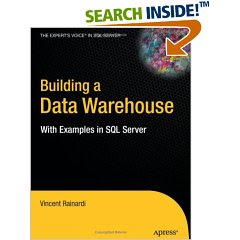
Product Description
* Cowritten by Ralph Kimball, the world's leading data warehousing authority, whose previous books have sold more than 150,000 copies
* Delivers real-world solutions for the most time- and labor-intensive portion of data warehousing-data staging, or the extract, transform, load (ETL) process
* Delineates best practices for extracting data from scattered sources, removing redundant and inaccurate data, transforming the remaining data into correctly formatted data structures, and then loading the end product into the data warehouse
* Offers proven time-saving ETL techniques, comprehensive guidance on building dimensional structures, and crucial advice on ensuring data quality
From the Back Cover
The single most authoritative guide on the most difficult phase of building a data warehouse
The extract, transform, and load (ETL) phase of the data warehouse development life cycle is far and away the most difficult, time-consuming, and labor-intensive phase of building a data warehouse. Done right, companies can maximize their use of data storage; if not, they can end up wasting millions of dollars storing obsolete and rarely used data. Bestselling author Ralph Kimball, along with Joe Caserta, shows you how a properly designed ETL system extracts the data from the source systems, enforces data quality and consistency standards, conforms the data so that separate sources can be used together, and finally delivers the data in a presentation-ready format.
Serving as a road map for planning, designing, building, and running the back-room of a data warehouse, this book provides complete coverage of proven, timesaving ETL techniques. Beginning with a quick overview of ETL fundamentals, it then looks at ETL data structures, both relational and dimensional. The authors show how to build useful dimensional structures, providing practical examples of techniques.
Along the way you’ll learn how to:
* Plan and design your ETL system
* Choose the appropriate architecture from the many possible options
* Build the development/test/production suite of ETL processes
* Build a comprehensive data cleaning subsystem
* Tune the overall ETL process for optimum performance
DownloadHere










